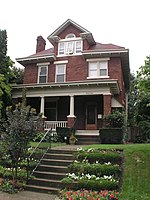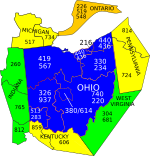Iuka Ravine Historic District
1985 establishments in OhioColumbus, Ohio stubsColumbus Register propertiesColumbus metropolitan area, Ohio Registered Historic Place stubsHistoric districts in Columbus, Ohio ... and 4 more
Historic districts on the National Register of Historic Places in OhioNRHP infobox with nocatNational Register of Historic Places in Columbus, OhioUse mdy dates from August 2023

The Iuka Ravine Historic District is a historic district in the University District of Columbus, Ohio. The site was listed on the Columbus Register of Historic Properties in 1985 and the National Register of Historic Places in 1986. The district has approximately 50 houses and apartment buildings, most located on the edge of the wooded Iuka Ravine. The houses are mostly craftsman and early 20th century revival styles, with noted Columbus architects Frank Packard and Charles Inscho represented. The district was the first development in the city to take advantage of its natural landscape, setting an example for other early 20th century developments around Columbus.
Excerpt from the Wikipedia article Iuka Ravine Historic District (License: CC BY-SA 3.0, Authors, Images).Iuka Ravine Historic District
Iuka Avenue, Columbus
Geographical coordinates (GPS) Address Nearby Places Show on map
Geographical coordinates (GPS)
| Latitude | Longitude |
|---|---|
| N 40.005 ° | E -83.002667 ° |
Address
Iuka Avenue 2043
43201 Columbus
Ohio, United States
Open on Google Maps










